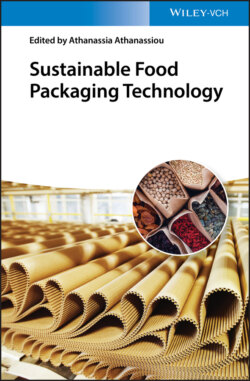Читать книгу Sustainable Food Packaging Technology - Группа авторов - Страница 31
1.3.11.5 Milk Proteins
ОглавлениеBiodegradable films can also be formed from milk proteins. The two most important types in the packaging field are casein and whey protein [147]. Casein, comprising 80% of total milk protein, consists of three main components, α, β, and γ with Mws in the 19–25 kDa range. It forms colloidal micelles in milk and is stabilized by calcium phosphate bridging. Casein precipitates when milk is acidified to the isoelectric point (pH = 4.6). Acidified casein is converted to functional soluble caseinates, that is, sodium and calcium caseinates, by neutralization through addition of alkali [148]. Biodegradable films based on caseinates can be obtained by solubilization in water followed by casting and drying. Film formation in water is feasible due to its emulsification capability [149]. Films from caseinates are transparent, with good mechanical and oxygen barrier properties but poor water vapor permeability in the range of WG‐ and SP‐based films [150].
Whey protein is the milk protein that remains soluble in milk serum after casein is coagulated during cheese or casein production. It comprises around 20% of the total milk proteins, being based on a mixture of proteins β‐lactoglobulin (approximately 57%, Mw of 18 kDa), α‐lactalbumin (approximately 20%, Mw of 14 kDa), bovine serum albumin, and immunoglobulins, among others. Formation of whey protein films involves heat denaturation in aqueous solutions, breaks existing disulfide bonds, and forms new intermolecular disulfide and hydrophobic bonds [151]. Films based on whey protein isolate (WPI) have shown promising mechanical properties as well as moderate water vapor permeability and good oxygen barrier properties [152, 153]. Nevertheless, the properties of WPI films are highly affected by relative humidity (RH) and the type and concentration of plasticizer [154, 155].
